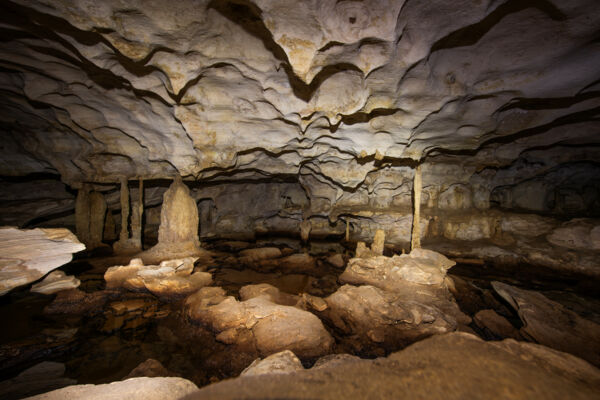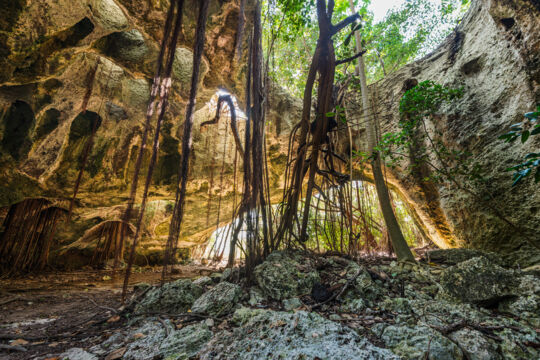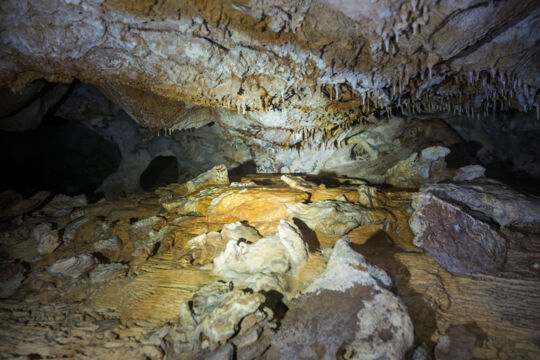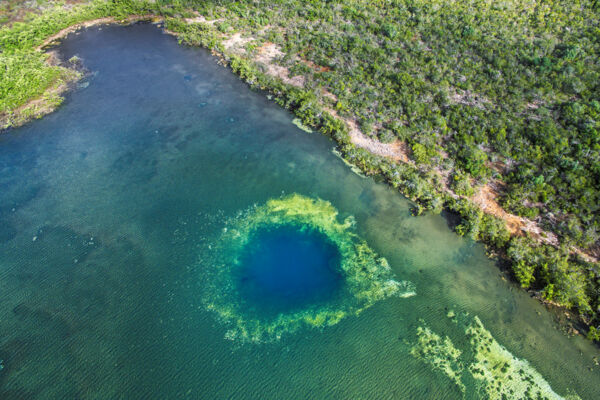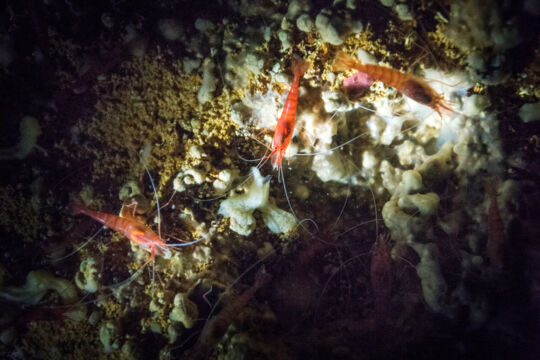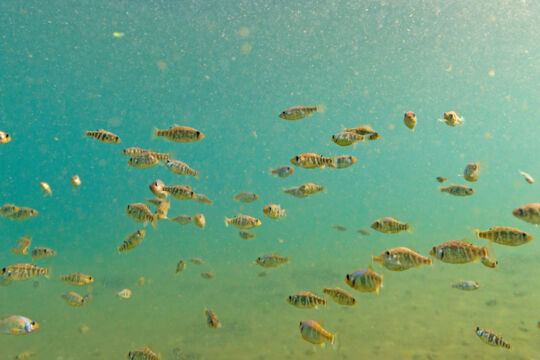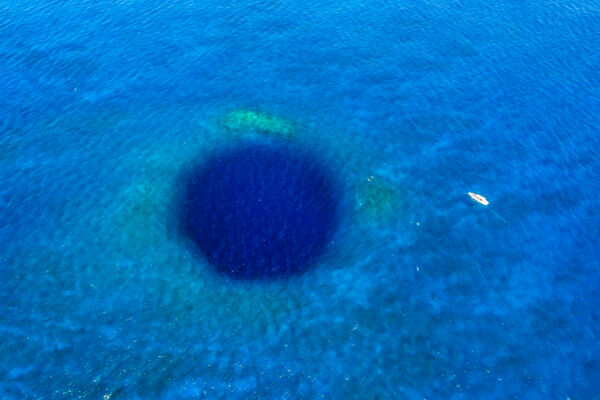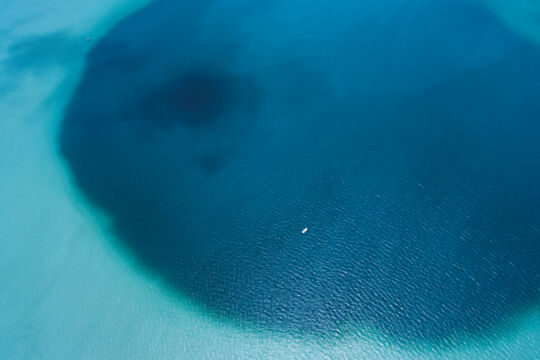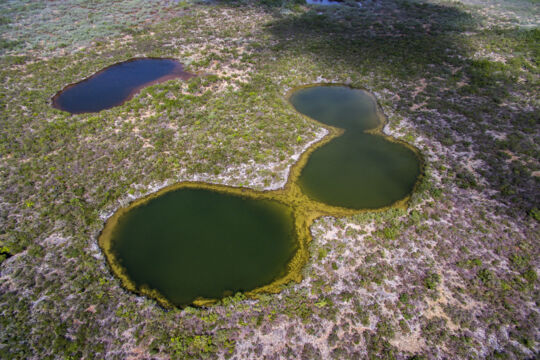Turks and Caicos Caves, Blue Holes & Sinkholes
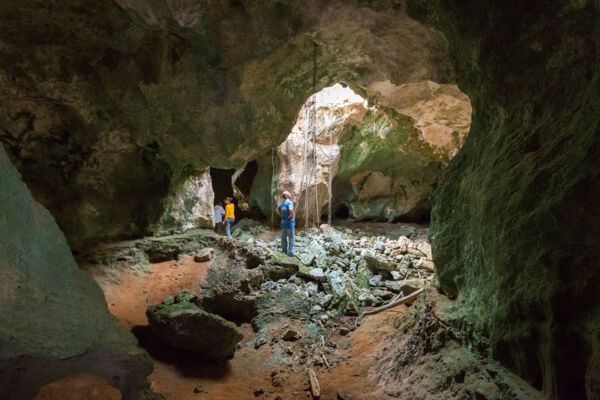
Although it’s not a widely known fact, the Turks and Caicos is home to many caves, sinkholes, and blue holes. Except for a few sea caves, the Karst system of dissolution created nearly all the identifiable cave features in the country.
This process, largely occurring over very long periods of time and when ocean levels were lower (for the current caves), was initiated by acidic rainwater collecting and dissolving the surrounding limestone rock.
The complete acidic factor didn’t entirely originate with the rain. When limestone dissolves, it produces carbonic acid in many cases. This carbonic acid would also feed the erosion process, resulting in the caves, blue holes, and sinkholes recognized today.
The entire subterranean underwater plateau that supports the Turks and Caicos archipelago is soft limestone, as is the majority of exposed rock throughout the country, so the various effects of the Karst process are seen on every large island and cay in the country.
Dry Caves
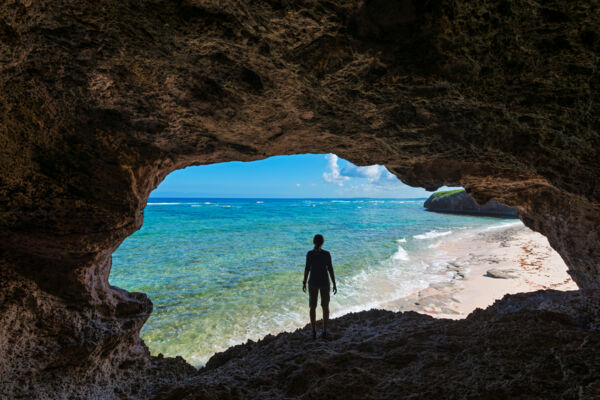
Conch Bar Caves on Middle Caicos is the best-known cave in the country, and is the largest non-submerged cave system in the Bahamas–Turks and Caicos islands chain. This fascinating site served as a storm shelter for the aborigine Taino peoples before the arrival of Columbus. During the 1800s, the system was mined for guano (bat manure). At the time of these diggings, artifacts from prehistoric peoples and bone remains from possible extinct animals were uncovered.
Also found on Middle Caicos and not far from Conch Bar Caves, Indian Cave is another interesting site. This open gallery cave features circular “skylights”, and papaya and wild ficus trees struggle to the light through these openings. Although not extensive, this is a fascinating and beautiful feature. As was the case with Conch Bar Caves, guano mining and subsequent archaeological digs revealed Taino artifacts and skeletal fragments of what was likely extinct land animals.
Albeit a bit smaller than Conch Bar Caves, East Caicos also has several remote caves that were also mined for guano. Bits of worked lumber and a loose stone causeway, at one time serving as the base for small-scale rail track, still remain.
Several smaller dry caves can be found on Providenciales as well.
Underwater Caves
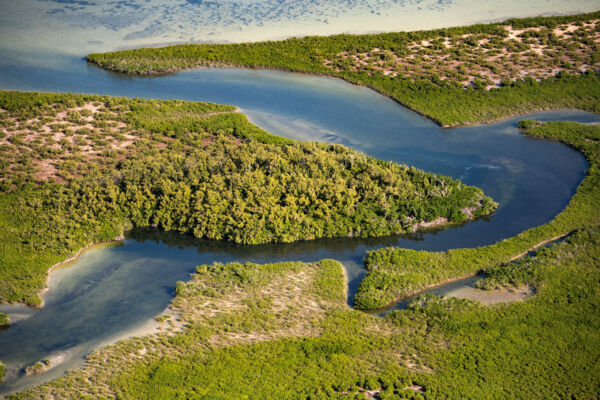
There’s a huge number of underwater caves throughout the Caicos Islands, and many remain largely unexplored. Underwater systems are found inland at some sinkhole and cave sites, but are far more common at certain locations in the shallow sounds and mangrove wetlands.
It’s difficult to obtain an accurate number of underwater caves due to the blurred line that separates what might be considered a “cave” from small fissures. However, the main Caicos Islands each have at least several systems that are large enough for an experienced cave diver to explore.
Many of the caves found inland are not visibly connected on the surface to the ocean, yet are tidal. No clear and uninterrupted subterranean connection to the ocean has been found (which doesn’t mean that they don’t exist) at any inland system. However, one quite small and tidal 200-foot (60 m) wide shallow pond on East Caicos shows evidence of an underwater cave system and supports a thriving barracuda population, even though it’s located nearly a mile (1.5 km) inland! Another interesting case is the Boiling Hole on South Caicos, which has been known to have small tarpon in it.
The typical cave profile of the wetland caves is an initial vertical drop of 40 to 70 feet (12 to 22 m), followed by largely horizontal passages which can be more than 300 hundred feet (90 m) in length and consist of multiple passages.
Sinkholes
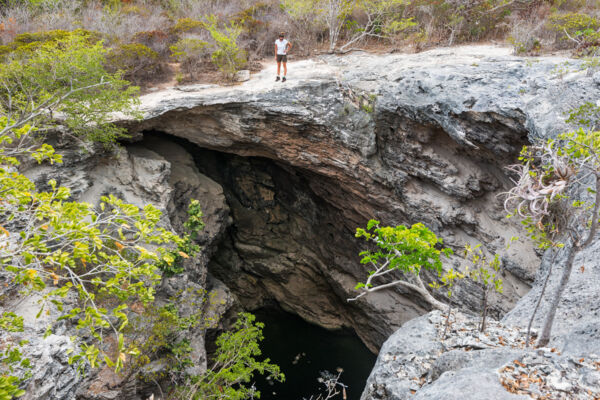
Small dry limestone sinkholes are found throughout the Caicos Islands. These vary greatly in size from less than a foot (0.3 m) in diameter to nearly a hundred feet (30 m). Depths also vary greatly depending on the terrain, yet 6 to 40 feet (2 to 12 m) depths are typical. In most cases, soil or loose rocks are found at the bottom.
The Hole on Providenciales is the best-known example in the country. Although not as cleanly defined as many of the smaller sinkholes, this feature is quite large with drops to water 60 feet (18 m) below.
The cliffs above Cooper Jack Bay Beach on Providenciales are an excellent area for viewing Karst limestone sinkholes. In an area of only a few acres, there are over 50 well-defined limestone sinkholes, including some reaching depths of over 40 feet (12 m) deep, along with several natural “bridge” arch formations and several small caves. Unfortunately, nothing has been done to protect this unique site.
Another interesting site is the West Harbour Bluff peninsula on Providenciales. A small cave is found here, along with dozens of sinkholes. At the start of the 1900s, famous Dutch anthropologist Theodoor de Booy conducted an archaeological dig at this site and uncovered several Taino artifacts. Today, this cave is a popular boat charter destination. The Crossing Place Trail region of Middle Caicos is also home to many small sinkholes, which, in addition to the rugged limestone formations sculpted by the ocean and weather, make for a very interesting landscape.
Blue Holes
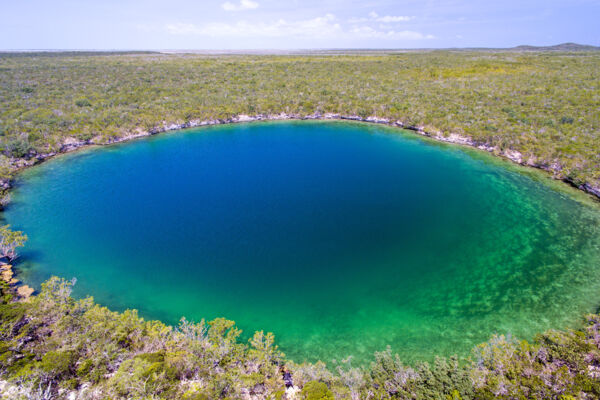
Characterized by perfectly round and wide openings, and rather impressive depths, several large submerged blue holes are found in the Turks and Caicos.
Two such sites, Cottage Pond and the Middle Caicos Ocean Hole, are well-known in the country.
Found in the interior of North Caicos between Kew and Sandy Point, the 255-foot-deep (78 m) Cottage Pond has seen a bit of exploration. Researchers using complex Trimix diving gases reached the bottom in 2001.
As is the case with some of the landlocked blue holes in the country, a halocline separated the brackish surface water layer of Cottage Pond from the salty deeper section of the hole. The bottom opened up into a rather large chamber, and horizontal cave passages continued at multiple levels. Another find was a previously unknown marine remipede, which was christened Kaloketos pilosus.
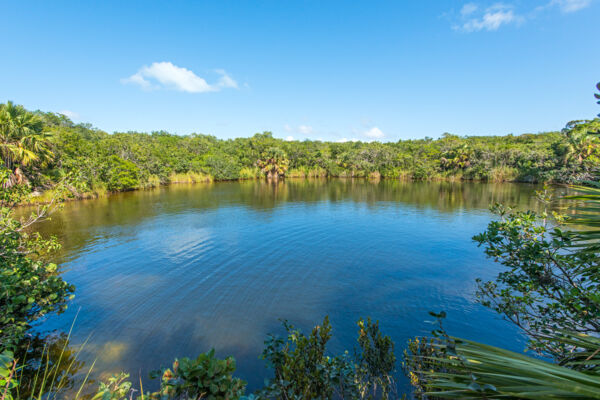
On a much larger scale, the impressive Middle Caicos Ocean Hole in the shallow Caicos Banks is remote yet probably deserves more recognition than it receives. At 2,000 feet (600 m) in diameter, this site may be the widest blue hole in the world. The depth was sounded at around 250 feet, but water visibility is often quite poor, so not many dives are made at the site. It’s said that sharks are rather abundant!
Nanny Pond near Haulover Plantation on Middle Caicos is quite similar in appearance to Cottage Pond on the surface. However, a collapse closed off much of the deeper portion of the hole.
East Caicos and Middle Caicos are home to large numbers of mid and smaller-diameter blue holes, and the two islands rival Andros Island in the Bahamas in the collective density of features per landmass.
Flora and Fauna in the Caves
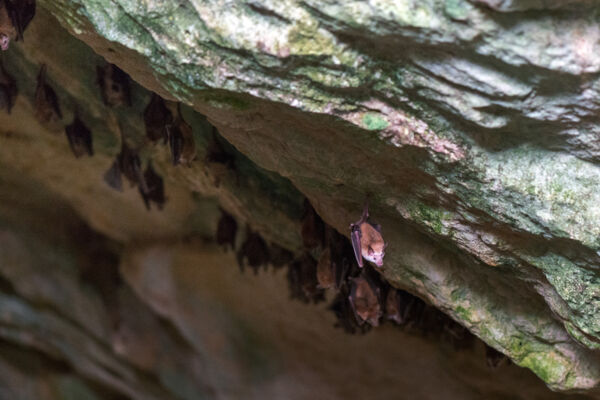
As relatively isolated systems, unique plants, and animals can be found in many caves and blue holes.
Due to the general difficulty of access, very little is known about the tiny marine creatures found in the water below. Shrimp can be quite common, and tiny remipedes and other crustaceans are also seen.
Bats make their homes in many of the larger dry caves in the country. The Buffy flower bat and the Cuban fruit bat are the most common species.
Barn owls can be seen at The Hole on Providenciales, at Indian Cave and Conch Bar Caves on Middle Caicos, and at the East Caicos Caves.
One creature to be aware of when exploring dry caves in the Turks and Caicos is the lowly paper wasp, as they favor the entrances of caves and holes as a nest location!

